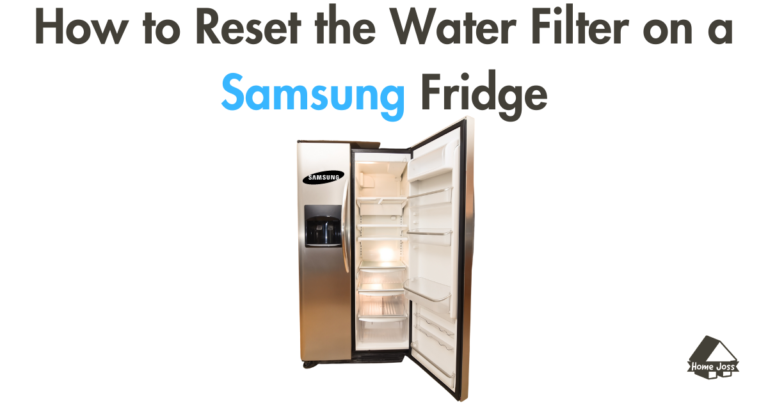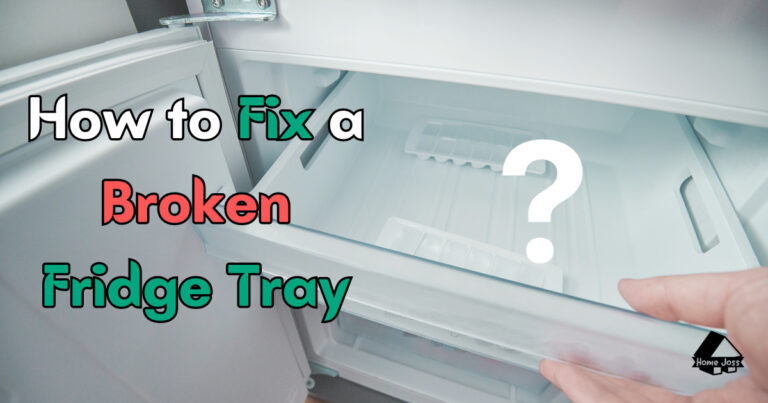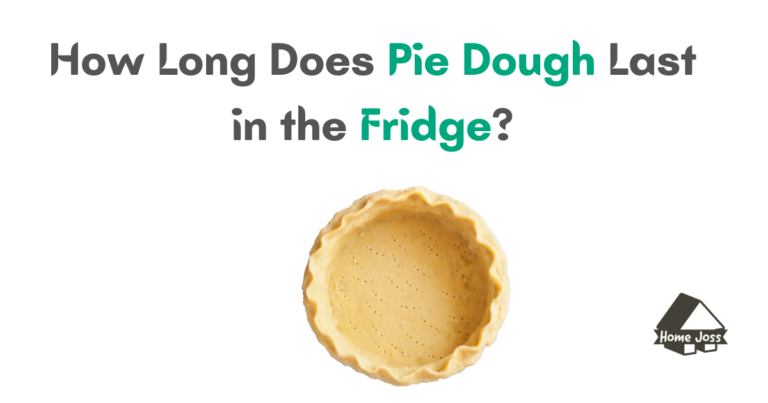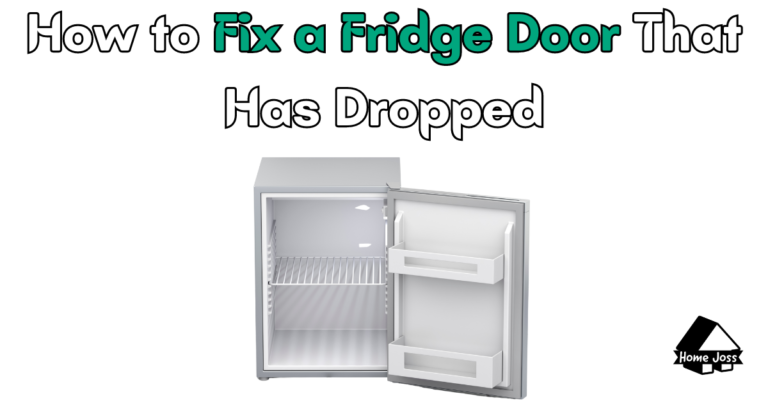If you’ve ever opened your refrigerator late at night only to be greeted by a flickering light, you’re not alone. Flickering fridge lights is a common issue, but luckily, there are several troubleshooting steps you can take to fix the problem.
In this comprehensive guide, we will explore the causes of flickering fridge lights and provide you with step-by-step solutions to resolve the issue. So, how do you fix a flickering fridge light?

Causes of Flickering Fridge Lights
There are several potential causes for flickering fridge lights. Understanding these causes will help you pinpoint the issue and find an appropriate solution. Here are some common reasons why fridge lights may flicker:
Loose or Worn-Out Bulb
One of the most common causes of flickering fridge lights is a loose or worn-out bulb. If the bulb is not securely screwed into the socket, it may not receive a constant power supply, resulting in flickering.
Similarly, old bulbs may start to flicker as they near the end of their lifespan. Checking and tightening or replacing the bulb can often resolve this issue.
Overheated LED-Array Controller
In modern fridges, LED lights are commonly used. These lights are controlled by an LED-array controller, which can overheat and cause flickering if there are loose wiring connections or poor circuitry.
Overheating can be a result of poor ventilation or other internal issues. In such cases, it may be necessary to examine the LED-array controller and repair or replace it if necessary.
LED Bulbs in Incandescent Bulb Housings Don’t Match Dimmer Wattage
Some fridges may have LED bulbs installed in incandescent bulb housings. If the LED bulbs have a different wattage than what the dimmer switch is designed for, flickering may occur.
It is important to ensure that the LED bulbs used in the fridge are compatible with the dimmer switch’s electrical range to avoid flickering.
Faulty Dimmer Switch
The dimmer switch inside the fridge can also be a source of flickering lights. Over time, the dimmer switch may become worn out, damaged, or obstructed by dust or debris. Loose or broken connections can also cause flashing lights. In such cases, inspecting and potentially replacing the dimmer switch may be necessary.
Other Possible Causes
In addition to the above-mentioned causes, there are other factors that can contribute to flickering fridge lights. Inadequate power supply, fluctuating voltages, issues with internal wiring, loose cords, or internal damage can all lead to flickering. Identifying the specific cause requires careful inspection and troubleshooting.
How to Fix a Flickering Fridge Light (Step-by-Step Solutions)
Now that we have discussed the general troubleshooting steps, let’s provide you with a detailed guide on how to fix a flickering fridge light. Follow these step-by-step solutions to address the specific issues causing the flickering.
Solution 1: Inspect and Tighten the Bulb
- Turn off the fridge and unplug it from the power source.
- Open the fridge and locate the light bulb.
- Carefully remove the bulb from the socket.
- Inspect the bulb for any signs of damage or wear.
- If the bulb appears to be in good condition, gently screw it back into the socket.
- Ensure that the bulb is securely tightened to establish a stable connection.
- Plug the fridge back in and turn it on to check if the flickering has stopped.
Solution 2: Check the Power Supply and Cords
- Turn off the fridge and unplug it from the power source.
- Inspect the power cable and cords for any visible damage or loose connections.
- Check the outlet to ensure it is functioning correctly.
- If necessary, reset the circuit breaker associated with the fridge.
- Unplug the fridge for 30 seconds and then plug it back in to reset it.
- Turn on the fridge and observe if the flickering persists.
Solution 3: Examine the Light Switch Assembly
- Turn off the fridge and unplug it from the power source.
- Locate the light switch assembly inside the fridge.
- Inspect the assembly for any visible damage or loose connections.
- Check the water filter to ensure it is correctly installed.
- Clean the light socket and remove any dirt or debris.
- If necessary, repair or replace the light switch assembly components.
- Plug the fridge back in and turn it on to check if the flickering has stopped.
Solution 4: Troubleshoot General Issues
- Turn off the fridge and unplug it from the power source.
- Inspect the light fixture for loose screws or wires.
- Check the circuit board for faulty switches or poor capacitors.
- Use a voltmeter to test the power in different parts of the circuit.
- Repair or replace any loose or faulty components as necessary.
- Plug the fridge back in and turn it on to check if the flickering has stopped.
Solution 5: Perform Regular Maintenance
- Ensure that your fridge is placed in a well-ventilated area to prevent overheating of LED lights.
- Regularly clean the coils on the back of the fridge to remove dust and debris.
- Use LED lights with the correct wattage recommended by the manufacturer.
- Inspect the seals on the door to ensure they are tight, secure, and clean.
- Avoid blocking the vents to maintain proper airflow.
- Follow the manufacturer’s recommended temperature settings for optimal performance.
Solution 6: Seek Professional Help
- If the flickering persists after attempting the previous solutions, it may be time to seek professional help.
- Contact a professional service agent or an electrician with experience in fridge repairs.
- Obtain multiple estimates and choose a certified technician to diagnose and resolve the issue.
- Follow their recommendations for repair or replacement of components if necessary.
Troubleshooting and Fixing a Flickering LED Light
Now that we have discussed the potential causes of flickering fridge lights, let’s delve into the troubleshooting process and explore the step-by-step solutions to fix the issue.
Check the Bulb
The first step in troubleshooting a flickering fridge light is to inspect the bulb. Ensure that it is securely screwed into the socket and properly seated. If the bulb is loose, tighten it gently to establish a stable connection. If the bulb appears worn out or damaged, replace it with a new one.
Inspect the Power Supply
If the flickering persists after checking the bulb, the next step is to examine the power supply. Inspect the power cable and cords for any visible damage or loose connections.
Additionally, check the outlet to ensure it is functioning correctly. If necessary, reset the circuit breaker associated with the fridge. Another option is to unplug the fridge for 30 seconds and then plug it back in to reset it.
Examine the Light Assembly
The light assembly, including the light switch assembly and LED-array controller, should be inspected for any visible damage or loose connections. Ensure that the water filter is correctly installed, as it may affect the light assembly.
Clean the light socket and check for any signs of damage or dirt that may be causing the flickering. If necessary, repair or replace the light assembly components.
Look for General Issues
In some cases, flickering fridge lights can be caused by loose screws or wires in the light fixture, faulty switches on the circuit board, or poor capacitors.
Using a voltmeter, you can check for power in different parts of the circuit to identify any issues. If loose connections or faulty components are found, they may need to be repaired or replaced.
Try General Maintenance Tips
To prevent flickering fridge lights in the future, it’s important to follow some general maintenance tips. Ensure that your fridge is placed in a well-ventilated area to prevent overheating of LED lights.
Regularly clean the coils on the back of the fridge to remove dust and debris that can cause overheating. Use LED lights with the correct wattage and inspect the seals on the door to ensure they are tight and clean. Avoid blocking the vents and follow the manufacturer’s recommended temperature settings.
Call a Professional
If the troubleshooting steps mentioned above do not resolve the issue, it may be necessary to call a professional service agent or an electrician. They have the expertise to diagnose and fix complex problems related to flickering fridge lights.
It is advisable to obtain multiple estimates and choose a certified technician experienced with fridge repairs.
FAQ about How to Fix a Flickering Fridge Light
How common is it for fridge lights to flicker?
Flickering fridge lights are a relatively common issue. They can be caused by various factors, but most cases are easily resolved.
Can flickering fridge lights be dangerous?
In most cases, flickering fridge lights are not dangerous. However, if the issue is related to faulty wiring or power supply, it is best to seek professional assistance.
Are LED lights more prone to flickering than incandescent bulbs?
LED lights are generally more reliable and less prone to flickering compared to incandescent bulbs. However, issues with LED-array controllers or incompatible dimmer switches can still cause flickering.
Can I fix a flickering fridge light myself, or should I call a professional?
Simple issues like loose bulbs or power supply problems can often be resolved by following the troubleshooting steps mentioned in this guide. However, if the problem persists or if there are complex electrical issues involved, it is advisable to call a professional.
How often should I perform maintenance on my fridge to prevent flickering lights?
Regular maintenance, such as cleaning the coils and inspecting the seals, should be performed periodically to prevent flickering lights and ensure the optimal performance of your fridge.
What should I do if none of the troubleshooting steps resolve the flickering issue?
If none of the troubleshooting steps mentioned in this guide resolve the flickering issue, it is best to call a professional service agent or an electrician for further diagnosis and assistance.
Can I replace an LED bulb with an incandescent bulb to avoid flickering?
It is not recommended to replace an LED bulb with an incandescent bulb in a fridge designed for LED lights. LED bulbs are more energy-efficient and have longer lifespans. Instead, ensure that the LED bulbs used are compatible with the fridge’s electrical specifications.
Are there any safety precautions I should take while troubleshooting flickering fridge lights?
Always unplug the fridge before performing any maintenance or troubleshooting. If you are unsure about any electrical work, it is best to seek professional assistance to ensure your safety.
Can flickering fridge lights cause other issues with the fridge’s functionality?
While flickering fridge lights themselves may not directly affect the fridge’s functionality, they can be a symptom of underlying electrical problems that may impact other components. It is important to address the flickering issue to prevent potential complications.
How long do LED bulbs typically last in a fridge?
LED bulbs have a longer lifespan compared to traditional incandescent bulbs. Depending on usage, LED bulbs in a fridge can last for several years before needing replacement.
Flickering fridge lights can be a nuisance, but with the right troubleshooting steps and solutions, you can fix the issue and enjoy a consistently illuminated fridge.
In this guide above, we have discussed the various causes of flickering lights, provided step-by-step solutions, and answered frequently asked questions. Remember to follow safety precautions and seek professional help if needed.
By addressing the flickering issue promptly, you can ensure the optimal performance of your fridge and eliminate any potential hazards.






